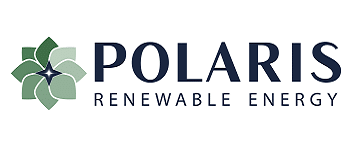Canadian Renewable Energy Stocks Might be Inconsistent for a While – But Eventually the Energy Transition Scale Will Tip Permanently
Key takeaways
Global Decarbonization Drives Demand: The push for net-zero emissions and government incentives worldwide are fueling massive growth in the renewable energy sector, positioning companies like Brookfield Renewable and Canadian Solar as long-term winners.
Diversification Offers Stability: Renewable energy stocks provide a balanced mix of predictable cash flow and high-growth opportunities.
Innovation is Transforming Energy: Advances in solar technology, energy storage, and offshore wind efficiency are unlocking new growth avenues, making this sector a critical part of the global energy transition.
3 stocks I like better than the ones on this list.There is zero doubt the whole world is shifting to greener and more sustainable energy sources. Fossil fuels might soon be outdated, and the world stands to gain big from using renewable energy.
How long will it take before Canadian renewable companies dominate the energy scene? It’s difficult to say. But if I were to guess, not long at all. That’s why you need to have a look at these Canadian stocks before it’s too late.
Yes, a Republican Party in power likely means scaled back efforts to transition to renewable energy, but in my opinion it is simply delaying the inevitable. As the technology continues to improve, costs will come down, lifespans of the assets will increase, and ultimately we will generate cleaner, more efficient energy for fractions of the cost.
If you’re reading this post, it is likely you agree with me. So, let’s take a closer look at three renewable energy companies we think are the cream of the crop here in Canada.
What are the best Canadian renewable energy stocks?
Leading global solar technology provider
Canadian Solar Inc. (NASDAQ:CSIQ)

Canadian Solar designs, manufactures, and sells solar modules, battery storage solutions, and other solar energy technologies. While headquartered in Ontario, the company operates globally, with projects across North America, Europe, and Asia. Canadian Solar also develops and manages utility-scale solar farms, contributing to the expansion of renewable energy infrastructure worldwide.
P/E: 25.1
5 Yr Revenue Growth: 13.4%
5 Yr Earnings Growth: -28.2%
5 Yr Dividend Growth: -%
Yield: -%
Developer of offshore wind and renewable energy projects
Northland Power (TSE:NPI)

Northland Power is a Canadian renewable energy company specializing in offshore wind, onshore wind, solar, and natural gas power projects. It owns and operates facilities in Canada, Europe, Asia, and Latin America. The company is a pioneer in offshore wind energy, with large-scale projects that are critical to meeting global renewable energy goals.
P/E: 17.7
5 Yr Revenue Growth: 7.2%
5 Yr Earnings Growth: -9.3%
5 Yr Dividend Growth: -%
Yield: 6.6%
Global leader in renewable energy assets
Brookfield Renewable Partners (TSE:BEP.UN)

Brookfield Renewable Partners owns and operates a diversified portfolio of renewable energy assets, including hydroelectric, wind, solar, and energy storage facilities. With over 25 gigawatts of capacity across North America, South America, Europe, and Asia, Brookfield is one of the largest pure-play renewable energy companies in the world.
P/E: –
5 Yr Revenue Growth: 8.8%
5 Yr Earnings Growth: -%
5 Yr Dividend Growth: 1.3%
Yield: 6.3%
Global leader in renewable energy assets
Polaris Infrastructure (TSE:PIF)

Polaris Infrastructure operates renewable energy projects, primarily focusing on geothermal power generation. Its flagship asset is the San Jacinto-Tizate geothermal plant in Nicaragua. The company also owns hydroelectric projects in Peru, providing a diversified renewable energy portfolio across Latin America.
P/E: –
5 Yr Revenue Growth: 1.9%
5 Yr Earnings Growth: -30.5%
5 Yr Dividend Growth: 0.6%
Yield: 7.2%
The renewable energy vs fossil fuel debate is a heated one
The effects of fossil fuels on the climate and climate change in general is an extremely touchy subject, and arguments from both sides tend to pack a sizable punch in terms of support. Plus, much like Canadian gold stocks, fossil fuel companies rely heavily on a commodity and can be quite cyclical.
But all while this is happening, green energy companies here in Canada are quietly amassing large asset bases and production capacities. This could make green energy stocks and ETFs an investment gold mine, especially with the aggressive marketing when it comes to ESG investing (Environmental, Social, and Governance).
Your best bet as an investor is to funnel out the noise and instead take a position in a strong TSX listed renewable energy stock. There aren’t too many, but there are certainly a few that are high quality.
What exactly do Canadian renewable energy companies do?
Renewable energy is defined as such:
“energy from natural resources that can be naturally replenished within a human lifespan.” – Natural Resources Canada
Renewable energy companies provide sources of power that are often considered cleaner and more sustainable including but not limited to:
- Hydroelectric
- Wind
- Solar
- Biomass
- Hydrogen
Renewable energy provides more than 20% of Canada’s energy supply, with hydroelectricity accounting for over half of that.
A common misconception among Canadian green energy companies
Companies in the renewable energy sector aren’t the new kids on the block, despite many thinking so.
In fact, they have been around for quite some time now, and as a result, clean energy stocks provide stable and reliable cash flows, much like regulated utility giants Fortis, Canadian Utilities and Emera.
The end result?
The best renewable energy stocks are able to provide strong dividends to go along with upside potential in an ever-growing industry.
As requested by many readers, we’ve also added a solar energy company to the list in this most recent update. Solar stocks in Canada have been around for a while, but have remained relatively unknown due to high costs, and investors are starting to gain interest.


